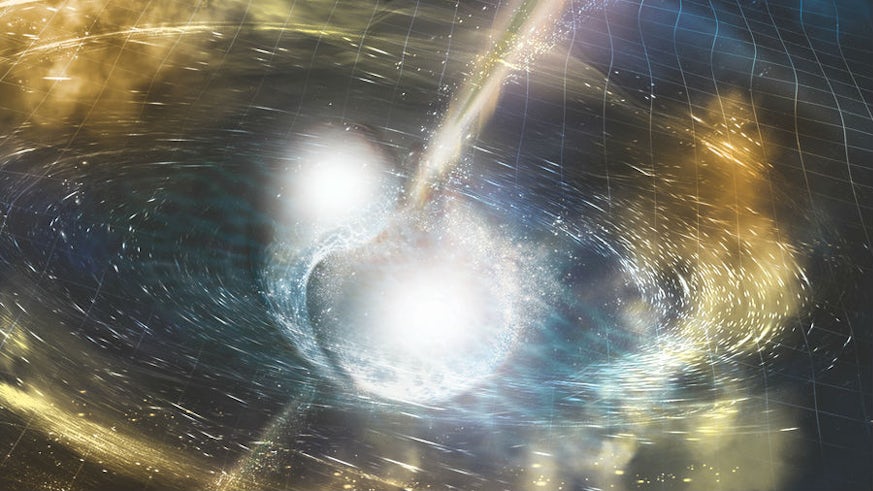Have scientists observed a black hole swallowing a neutron star?
3 May 2019

Within weeks of switching their machines back on to scour the sky for more sources of gravitational waves, scientists are poring over data in an attempt to further understand an unprecedented cosmic event.
Astronomers working at the Laser Interferometer Gravitational-Wave Observatory (LIGO) and the European-based Virgo detector have reported the possible detection of gravitational waves emanating from the collision of a neutron star and a black hole.
The signal, detected on 26 April, came just weeks after the teams turned the updated detectors back on to start their third observation run, named “O3”.
"The universe is keeping us on our toes," says Patrick Brady, spokesperson for the LIGO Scientific Collaboration and a professor of physics at the University of Wisconsin-Milwaukee. "We're especially curious about the April 26 candidate. Unfortunately, the signal is rather weak. It's like listening to somebody whisper a word in a busy café; it can be difficult to make out the word or even to be sure that the person whispered at all. It will take some time to reach a conclusion about this candidate."
The possible detection not only throws light on an event that up until now has never been observed, but also confirms the unprecedented accuracy with which the gravitational wave detectors are now operating.
Included in the latest batch of discoveries is another possible merger between two neutron stars – potentially the second time this has been observed by the LIGO and Virgo teams – as well as a further three interesting black hole mergers.
Professor Mark Hannam, a member of the LIGO team and Director of Cardiff University’s Gravity Exploration Institute said: “Yet again the LIGO and Virgo detectors have surpassed expectations. Our most optimistic estimates were for a detection every week, and the first month of the run gave us five candidates.”
Dr Vivien Raymond, from Cardiff University’s Gravity Exploration Institute, said: "LIGO-Virgo's third observing run has already proven to be more interesting than we expected, barely a month after it started. It's exciting to think about the next surprises in the Universe for us to discover."
Gravitational waves are ripples in space produced by massive cosmic events such as the collision of black holes or the explosion of supernovae.
Research undertaken by Cardiff University’s Gravity Exploration Institute has laid the foundations for how we go about detecting gravitational waves with the development of novel algorithms and software that have now become standard tools for detecting the elusive signals.
The Institute also includes world-leading experts in the collision of black holes, who have produced large-scale computer simulations of what is to be expected and observed when these violent events occur, as well as experts in the design of gravitational-wave detectors.
The twin detectors of LIGO—one in Washington and one in Louisiana—along with Virgo, located at the European Gravitational Observatory (EGO) in Italy, resumed operations on 1 April , after undergoing a series of upgrades to increase their sensitivities to gravitational waves—ripples in space and time.
Each detector now surveys larger volumes of the universe than before, searching for extreme events such as smash-ups between black holes and neutron stars.
In total, since making history with the first-ever direct detection of gravitational waves in 2015, the network has spotted evidence for two neutron star mergers; 13 black hole mergers; and one possible black hole-neutron star merger.
Share this story
It is a friendly, approachable School with a strong commitment to teaching excellence and world class research in physics and astronomy.



